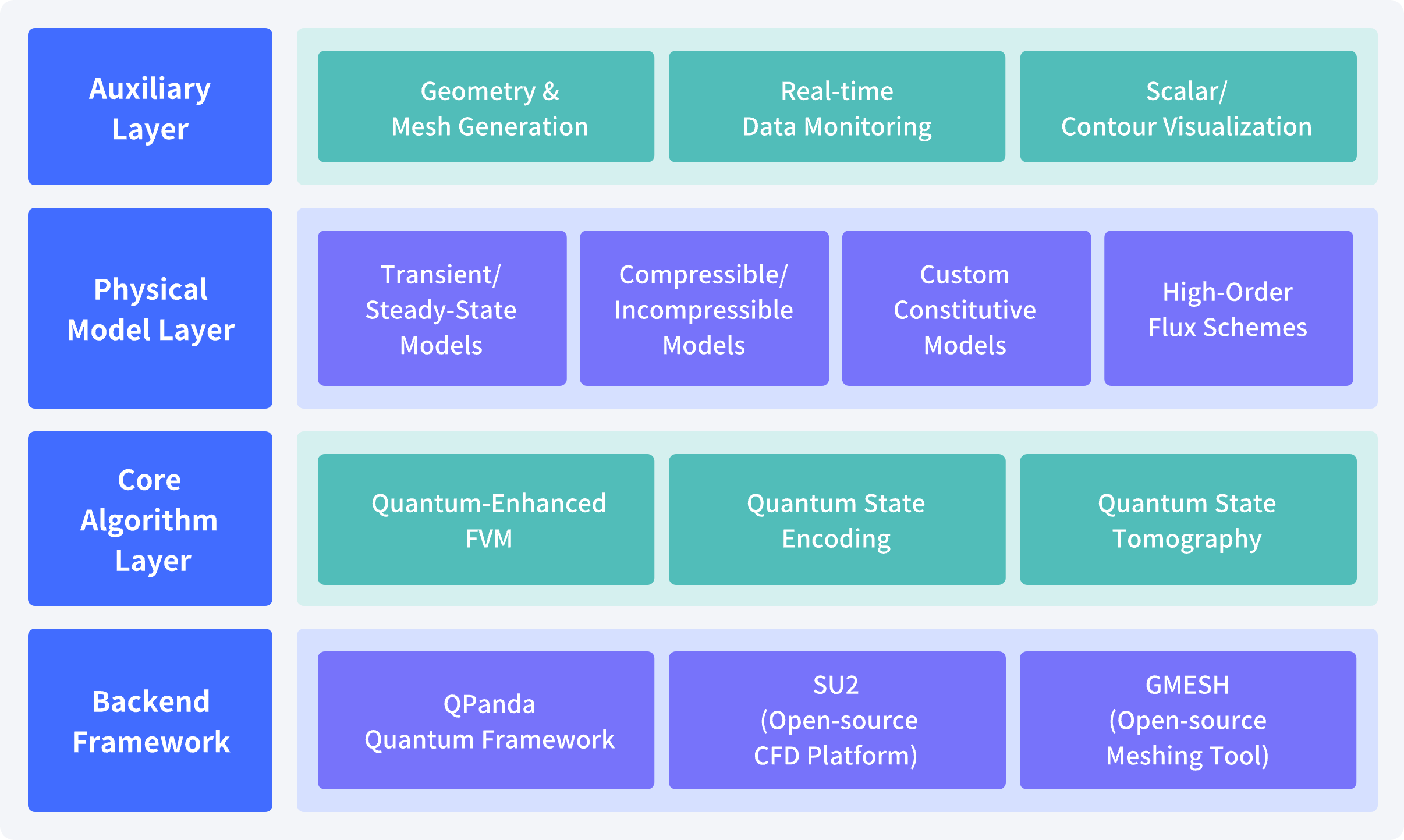QCFD - Quantum Computational Fluid Dynamics Software
Quantum-Driven Fluid Simulation Breakthrough Accurate Modeling for Cross-Domain Flow Dynamics
Get Started with QCFD ->
QCFD is an advanced fluid dynamics simulation software built on quantum computing technology, designed to leverage the massive parallel processing power of quantum computing to overcome performance bottlenecks faced by traditional computational methods in fluid dynamics.
By using quantum computing models to simulate and optimize complex fluid systems with high precision, it is widely applied across industries such as aerospace, energy, environmental science, and automotive engineering. Thanks to QCFD, users can perform more complex fluid analyses in less time and achieve more accurate predictions of fluid dynamic behavior.

Supports mainstream mesh file formats · Integrated geometry construction & mesh generation in Windows
Transient/Steady-State solving · Compressible/Incompressible models · Custom fluid constitutive models · 1st/2nd-order flux schemes
Distributed computing acceleration · Checkpoint restart for large-scale tasks
· Subspace HHL algorithm · Subspace variational algorithm
DIAGNOAL_SCALING · STATIC_SPAI · DYNAMIC_SPAI · Jacobi
Compressible and incompressible flows · Steady and unsteady flows · Inviscid, laminar and turbulent (Supports 2D and 3D simulation and result rendering)
Superconducting quantum computer(coming soon) · Local Host · Clusters · Support checkpoint resumption

QCFD enables efficient simulation in aerodynamic optimization, improving aircraft layout and enhancing lift-to-drag ratios for better performance.

In maritime applications, QCFD analysis and optimization help reduce navigation resistance, improving fuel efficiency for ships and vessels.

For civil infrastructure, QCFD designs enhance structural safety of building complexes while optimizing indoor ventilation and thermal comfort.

Leveraging quantum computing's speed advantages, QCFD technology significantly improves weather forecasting efficiency and prediction accuracy.